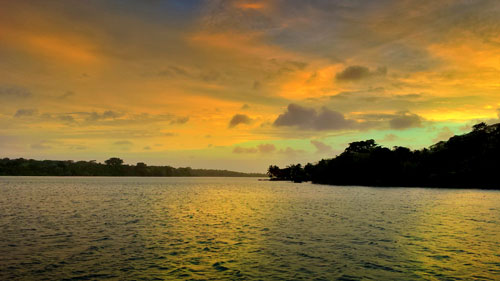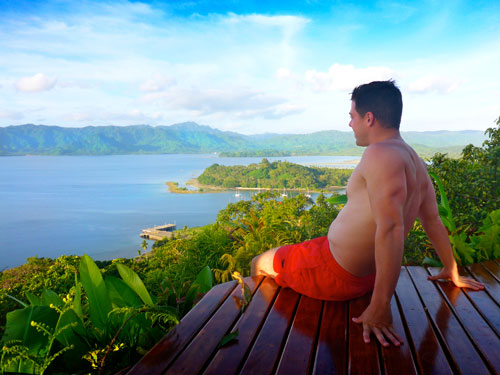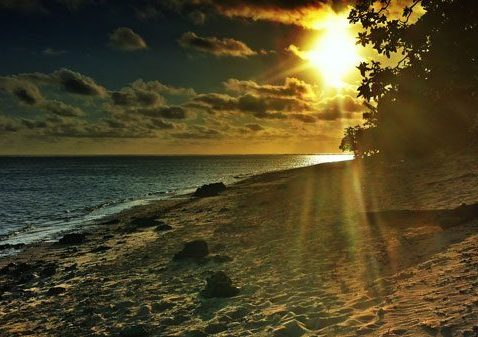I’ve been quizzed on this more times than I care to remember. And with that, I thought I would compile a comprehensive list to help out – there is just too much to mention in casual conversation. With their close proximity, just over 1,000km, you would expect the two island chains to provide a fairly similar experience. Keep in mind Vanuatu is a 3hr flight from Sydney, Fiji is 4hr.
On the surface they may seem very similar but once you have visited both you soon realise they have distinct pros to set them apart. However, from my experiences, Fiji trumps Vanuatu almost hands down. Saying this won’t please everyone, but I believe I have some solid reasoning below. I wouldn’t hesitate to visit & see more of Vanuatu if the chance arose, but my time in Fiji was just THAT much more memorable.
Fiji
Vanuatu
For those looking to explore more than one location, Fiji was far easier to move around, between islands or to get around the larger islands of Vanua Levu and Viti Levu. The Vanuatu chain consists of fewer islands (83 compared to Fiji’s 300) but ferries and plane services are not as frequent or quick.
Culture & the people
The Fijian people’s reputation for friendliness and hospitality is certainly no myth. And whilst the people of Vanuatu are still very friendly, I just didn’t experience it to the same degree there. And I would assume the friendliness would make all the difference if you are travelling with kids.
Both have a similar village culture despite descending from different areas. Visiting a village in Fiji is a must – many operate almost as they would traditionally, it was a great experience spending a few hours with the locals on more than one occasion. Remember that Fijians used to be cannibals, so find a village with a bit of history if that interests you.
The village I visited on Efate Island, Vanuatu, was far more commercialised, with shops selling wood carvings, beads & animal products – it just wasn’t my cup of tea.
NB. If visiting a village in Fiji be mindful to remove hats as it is insulting to the chief. It is also worth noting that touching someone’s head is also a mark of disrespect.
Port Vila the capital of Vanuatu offers more than it’s Fijian counterpart, Nadi, when it comes to dining & nightlife. I didn’t venture to the Pacific destinations for this, but was pleasantly surprised by the French influence in Vanuatu. It was far more lively after dark in the Vanuatu capital than in Nadi.
Both have extremely low crime rates. If you leave something behind, chances are it will make its way back to you. So this is something that shouldn’t even cross your mind.
Things to do
Both Fiji & Vanuatu offer similar activities, as you would expect reef islands to. Diving, snorkelling, fishing, etc – at face value they seem to offer more or less the same. Both offer pristine rainforest with rivers & beaches with crystal clear water.
I found the beaches in Fiji to be MUCH better, and the snorkelling too. Fiji’s Coral Coast is particularly impressive and you don’t require a tour! There is great snorkelling all around Fiji, no matter where you locate yourself, whereas Vanuatu offers much less (generally day tours).
For the history buff, Vanuatu offers some interesting snorkelling & diving experiences due to the Americans’ use of the island chain against the Japanese. Million Dollar Point offers a collection of vehicles and WWII artefacts to explore & snorkel around. The US military dumped all the equipment remaining at the end of the war into the sea and it still lies here today.
The troop ship SS President Coolidge is able to be explored by dive after hitting a mine. Both places are located on Espiritu Santo, north of the main island of Efate.
One experience from Vanuatu I will never forget is the day trip to Tanna Island. The drawcard, being able to walk along the crater of an active volcano, Mount Yasur! This was amazing as it is active all day, every day. Whilst Fiji has volcanoes that can be hiked, they aren’t active. Tanna Island has a few resorts, but mostly is accessed through day tours which include flights from Port Vila. If you do stay on Tanna Island, the snorkelling is reportedly very good.
Affordability
Being from Australia and visiting these places, comparably, they are both cheap. I found Fiji to provide slightly better prices when it came to the travel essentials – accommodation, transport. Meals, and of course alcohol, are much cheaper on Fiji and I didn’t have a bad meal in the month I spent there. Vanuatu is more expensive (think closer to Australian prices), but the menu generally offers a little more.
Importantly on that note, I found the Tusker beer in Vanuatu to be horrid, bordering on undrinkable. The Fiji beer was great after a long day out in the sun.
Visiting Times
Fiji is a good year-round destination with consistently warm weather all year. Go in May to September/October for a true taste of tropical paradise during the dry season. November to April is the wet season, so visiting during these months might expose you to the occasional tropical storm and added humidity – although, it is when tourist numbers are lower. The temperature rarely goes below 26°C year round.
Vanuatu has a semi-tropical climate. The wet season there is from November to March, so expect more storms and rainfall with increased humidity. It’s best to go between April to October in the dry season with the temperature averaging a comfortable 25°C.
With regards to both locations, do some research as they are both popular during Australian and New Zealand school holidays – these dates vary each year.







 Daniel & Nadine
Daniel & Nadine 